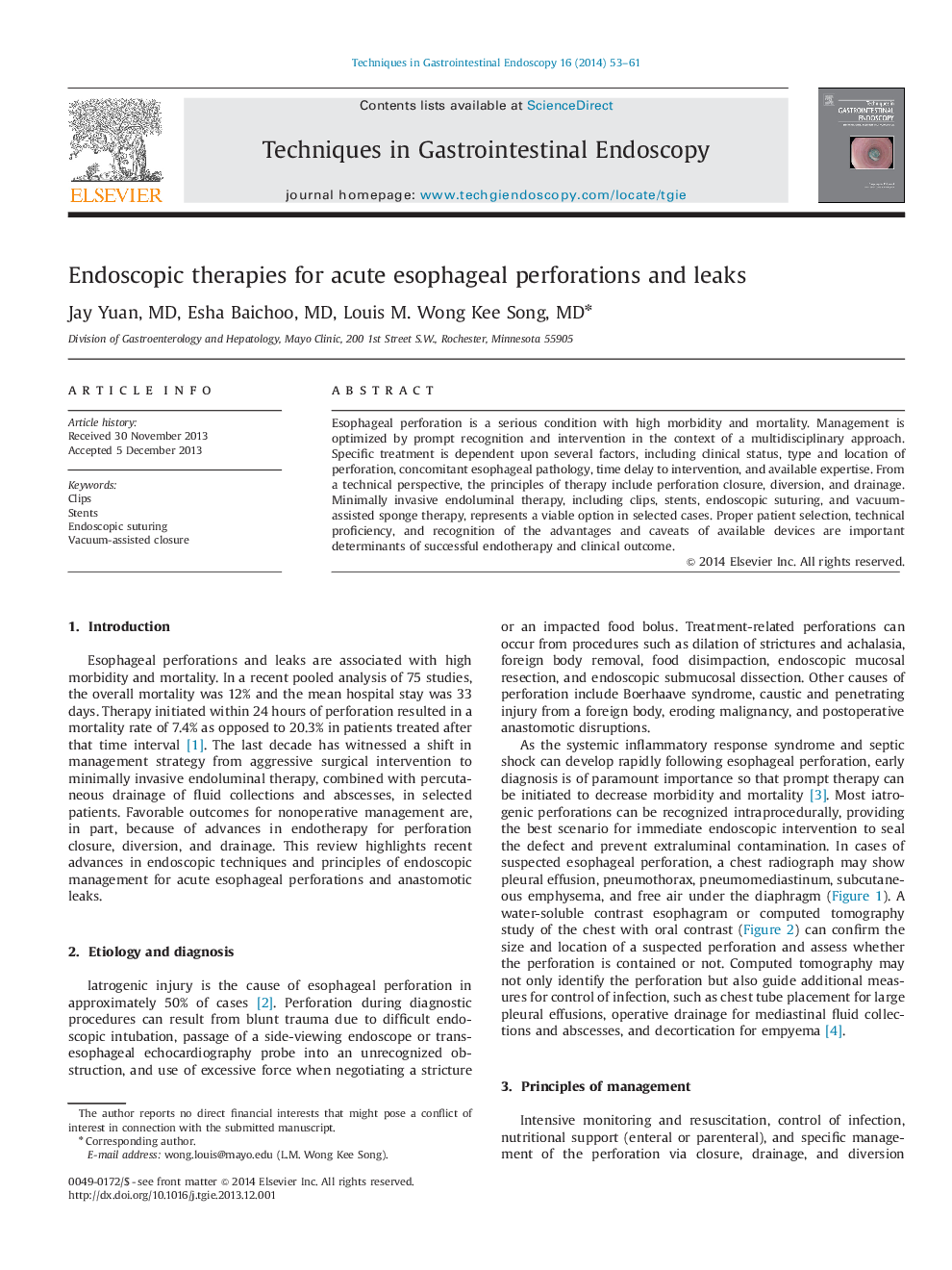| کد مقاله | کد نشریه | سال انتشار | مقاله انگلیسی | نسخه تمام متن |
|---|---|---|---|---|
| 3322466 | 1211808 | 2014 | 9 صفحه PDF | دانلود رایگان |
Esophageal perforation is a serious condition with high morbidity and mortality. Management is optimized by prompt recognition and intervention in the context of a multidisciplinary approach. Specific treatment is dependent upon several factors, including clinical status, type and location of perforation, concomitant esophageal pathology, time delay to intervention, and available expertise. From a technical perspective, the principles of therapy include perforation closure, diversion, and drainage. Minimally invasive endoluminal therapy, including clips, stents, endoscopic suturing, and vacuum-assisted sponge therapy, represents a viable option in selected cases. Proper patient selection, technical proficiency, and recognition of the advantages and caveats of available devices are important determinants of successful endotherapy and clinical outcome.
Journal: Techniques in Gastrointestinal Endoscopy - Volume 16, Issue 1, January 2014, Pages 53–61
